How to store potatoes in the cellar?
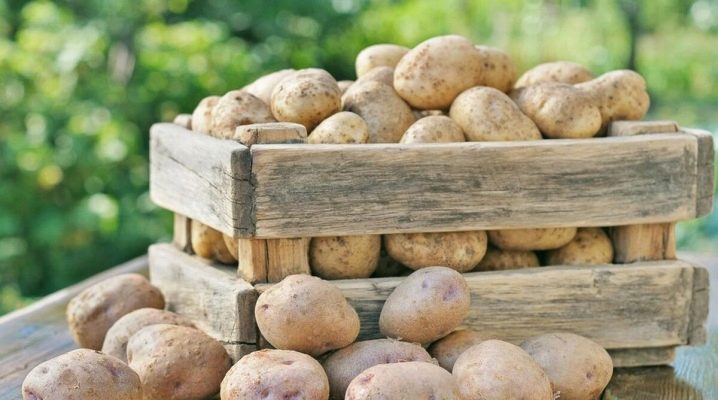
Many people choose a cellar for storing potatoes, since this cool and dark place is ideal. In this article, we will take a closer look at how to store potatoes in a cellar, how to prepare tubers and premises, what storage methods exist, as well as possible mistakes.
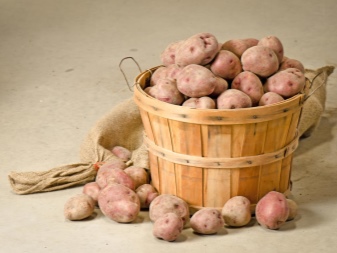
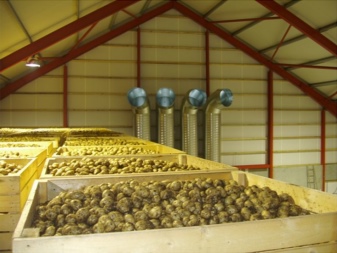
Temperature regime
To properly store potatoes in the basement, you should initially adhere to a certain temperature regime. For root crops, optimal storage is possible at a temperature of + 2-4 degrees. If the temperature rises, the potatoes will sprout rather quickly.
And if in winter the temperature regime drops below 0 degrees, then the roots will be covered with mucus and they will taste sweet.
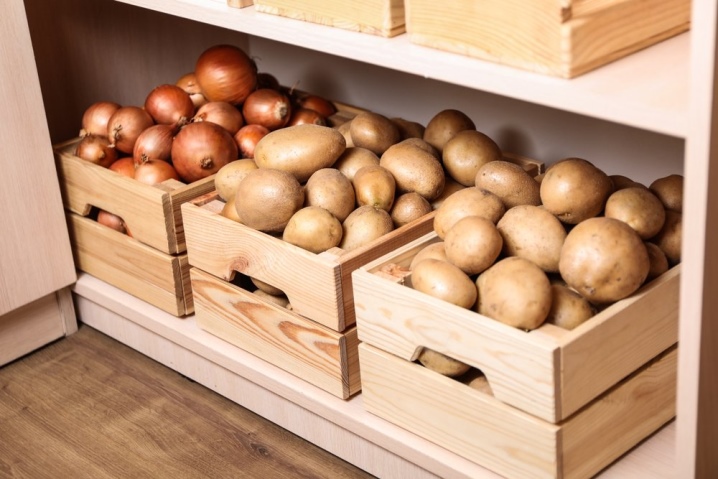
Tuber preparation
Tubers should be prepared immediately after harvest. Before storing potatoes in the cellar, you should go through several main stages.
- It is necessary to immediately remove the remnants of soil from root crops. It is strictly forbidden to wash the potatoes, because this action will lead to rather rapid decay. You can only clear the ground manually.
- Root crops need drying. It is better to dry the dug up crop outdoors, but at the same time the sun's rays and rain should not fall on the potatoes. Place the tubers in a thin layer on a dry surface.
- For long-term storage, it is recommended to always sort the crop. Usually, the division is made by size, in addition, spoiled fruits should be kept separately: if they are spoiled mechanically - in one pile, damaged by parasites - in another. And also do not forget to separate the seed potatoes, which will be used for future planting.
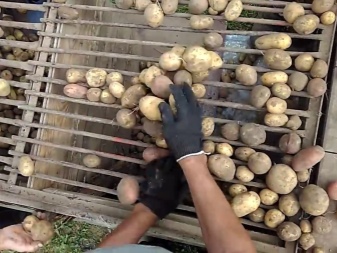
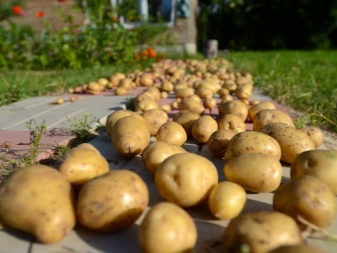
Cellar preparation
The best place to store potatoes in winter is an underground room, for example, a basement or cellar. But, unfortunately, it is not always possible to keep the root crop until spring. Potatoes contain a lot of starch and liquid, so they start spoiling pretty quickly. Experienced experts recommend adhering to certain conditions, then the potatoes will remain until spring.
First of all, you should think about the possible temperature drop. If you make high-quality insulation, then the risk of both freezing of the potato and its overheating will be excluded. It is recommended to prepare the premises even before the harvest season.
There are practically no risks of freezing or overheating for a free-standing cellar, since under the snow dome it will have approximately the same air temperature.

Cellar preparation should include several important activities.
- It is advisable to arrange a cellar above the basement, which is a special structure that allows you to protect the room from various external factors. As a result, the temperature in the cellar will be stable even in frosty conditions.
- It is imperative to insulate the doors, since they must be airtight. For insulation, you can use various materials, for example, foam.
- It is worth adhering to a certain temperature regime, then the potatoes will be stored until spring. The optimum temperature is + 2-3 degrees.
- If the cellar is quite deep, then it is advisable to make another hatch. The presence of two hatches will create a vacuum space that will protect the crop from freezing.
- If necessary, you can make additional heating using special lamps.They need to be placed in the corners of the cellar. When the temperature drops, they will need to be turned on. It should be noted that the lamps should be painted dark. There are even lamps on sale with sensors that turn on automatically when the temperature drops.
- You can use special split systems to cool the room. But they are quite expensive, so not everyone can make such a purchase. If you need a cheaper analogue, you should pay attention to the compressor from the old refrigerating chamber.
- If the room is rather cold, then it is recommended to store the potatoes in boxes or boxes. They must be insulated. You can use old things in several layers or blankets - this way the potatoes will be protected from freezing.
- Ensure good ventilation to prevent the possibility of crop rot.
- The moisture level should be maintained within 60-70%. For this, special moisture-absorbing substances are used. For example, containers filled with lime powder can be placed around the perimeter.
- It is very important to dry the cellar, throw out all the garbage and treat the room with disinfectants, providing protection against fungus, mold and various parasites. Within 7 days, you will need to process the room twice. The cellar should be whitewashed from the inside. To do this, you need to prepare the following mixture: for 10 liters of water, you will need 1 kg of copper sulfate, 2 kg of slaked lime and 150 grams of table salt.
- All wooden pallets and boxes must be thoroughly dried, but before that it is necessary to process with a solution of potassium permanganate.

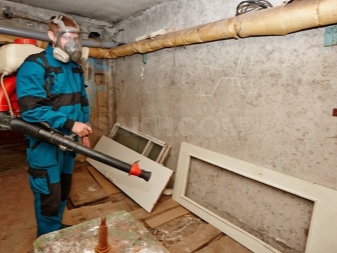
Warehousing methods
Potatoes can be stored in a variety of ways. It is recommended that you familiarize yourself with all possible solutions in order to choose the most convenient option for yourself. Initially, the potatoes are collected in bags, which must be lowered into the cellar very carefully, then the crop will not be damaged and premature rotting will not occur. Let's take a closer look at several of the main storage methods.
In bags
A very convenient and popular method is the storage of tubers in bags. Since burlap is characterized by naturalness, it allows air to pass through, which means that it is able to protect the crop from freezing.
If a decision is made to store root crops in bags, they should be placed on special pallets, then the lower layers will not rot and freeze. Planks, sawdust or straw can be used as a pallet. It is better to put bags of crops standing in a circle or lying down, then 5 bags are used as much as possible, but their height should not exceed three meters. For additional insulation, sawdust, straw or just old blankets are used.
Important! To store potatoes for a long time, the bags do not need to be placed end-to-end; air should be moved.
It is convenient to store potatoes in bags if frequent transportation of the crop is planned. It is forbidden to use plastic bags for storage, since they practically do not allow air to pass through. The potatoes in them begin to rot.
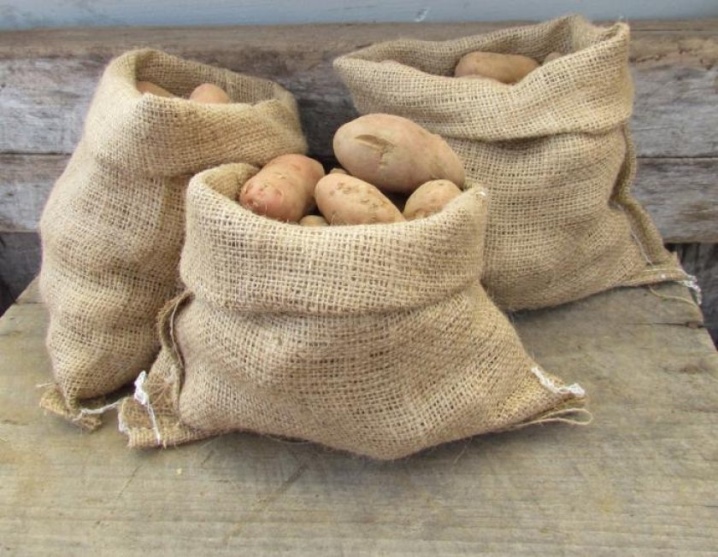
In grids
Many people use nets for storing potatoes. Initially, the roots are cleaned of the ground, then they are laid in nets and placed on pallets. The mesh provides excellent ventilation, the harvest is stored for a relatively long time. On average, the shelf life is from 1 to 1.5 months. This option is optimal for storing products for everyday use.
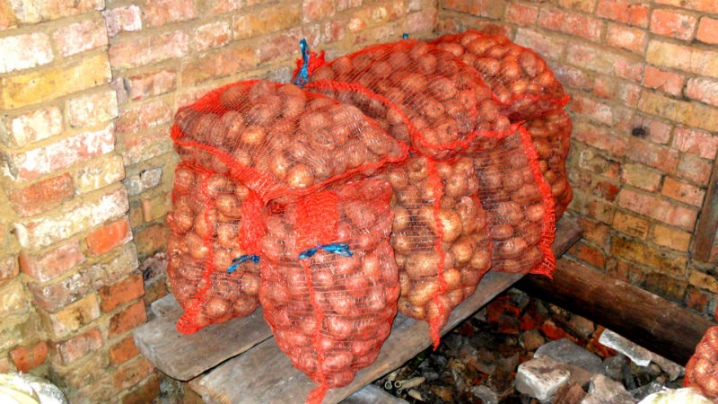
In bulk
Bulk storage is generally considered the easiest method. There is no need to use a container for storing potatoes in bulk. But you need to adhere to the following rules and tips:
- this is a simple option, but impractical - the potatoes can be filled up only to a height of 1 meter;
- the fruits are covered and no longer touched until planting or consumption;
- this method does not allow for temperature regulation in the middle of the heap, and it is also quite difficult to get root crops;
- in addition, a rather large area is occupied, as a result, fungus, rotting and deterioration appear.
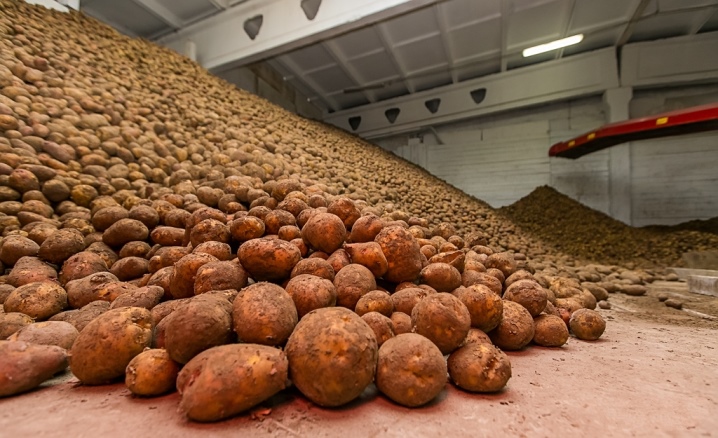
In boxes
Many gardeners prefer to store potatoes in boxes. In this case, you should adhere to the following recommendations:
- you need to use special boxes, the distance between the slats should be from 2 to 4 cm in order to carry out more intensive ventilation;
- the distance from the floor to the bottom of the box should be from 20 cm;
- between the boxes you need to maintain a distance of 10 cm;
- 30 cm should remain from the box to the wall;
- from the ceiling to the top box with potatoes, a distance of 60 cm is allowed.
The peculiarity of this option for storing potatoes is that the boxes can be made independently using individual sizes. If desired, they can even be divided into sections in order to store each variety separately, if there are several.

Possible mistakes
Inexperienced gardeners can make quite a few mistakes. The most common are the following:
- high humidity in the room;
- the required temperature regime is not observed;
- there is no sorting of root crops during the winter;
- no ventilation;
- there is no regular ventilation.

All actions should be aimed at increasing the keeping quality of the crop, namely:
- it is advisable to put boxes with potatoes not on the floor, but on shelves located at a height of 20 cm from the floor level;
- on top, the fruits are covered with a layer of beets or bags of sawdust, which will protect the crop from excess moisture;
- it is desirable that each variety be kept separate from the others;
- to prevent the formation of condensation, you can install a so-called suspended ceiling made of polyethylene film;
- it is imperative to sort out all the potatoes at the end of January, in which case it will definitely stand until spring;
- to protect root crops from mice, you need to put elderberry leaves on top of the crop;
- fern and wormwood leaves protect the fruit from rot.

If you adhere to all the above recommendations, then you can keep the potatoes high-quality and tasty until spring.
It is necessary to observe the level of humidity, temperature conditions and create optimal ventilation. All these conditions lead to the fact that the crop does not freeze, rot and germinate throughout the winter.














The comment was sent successfully.